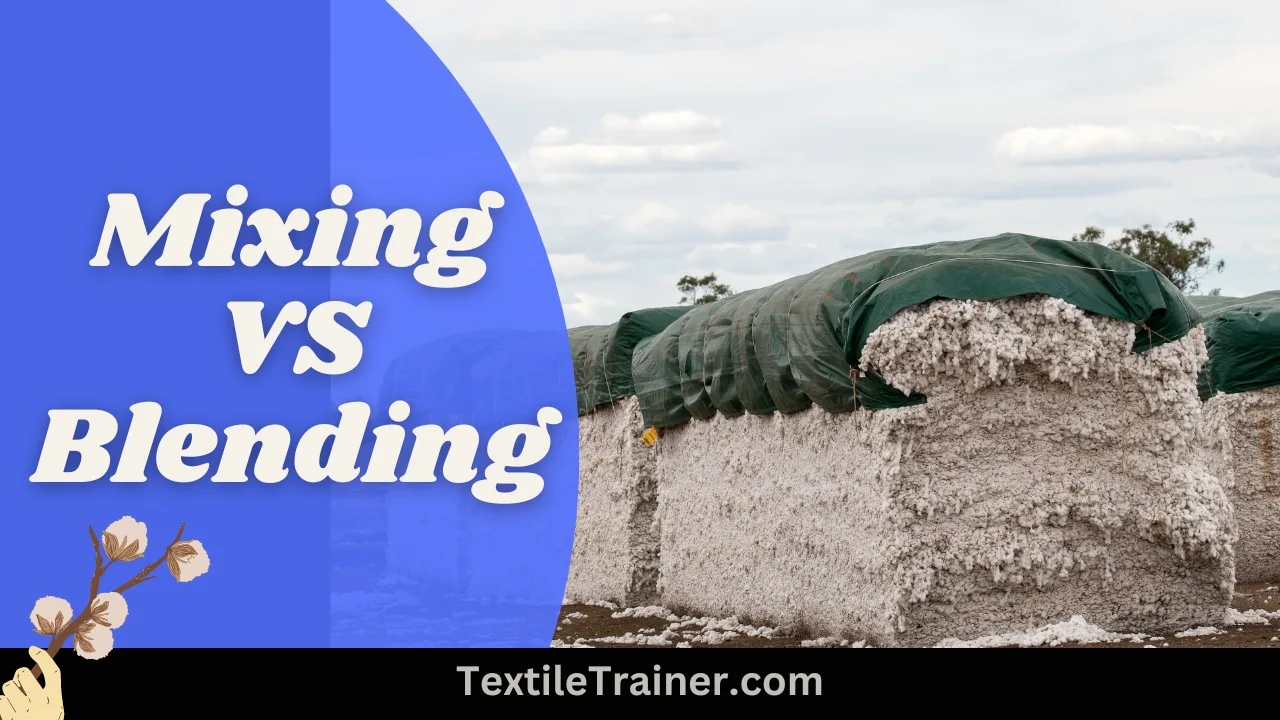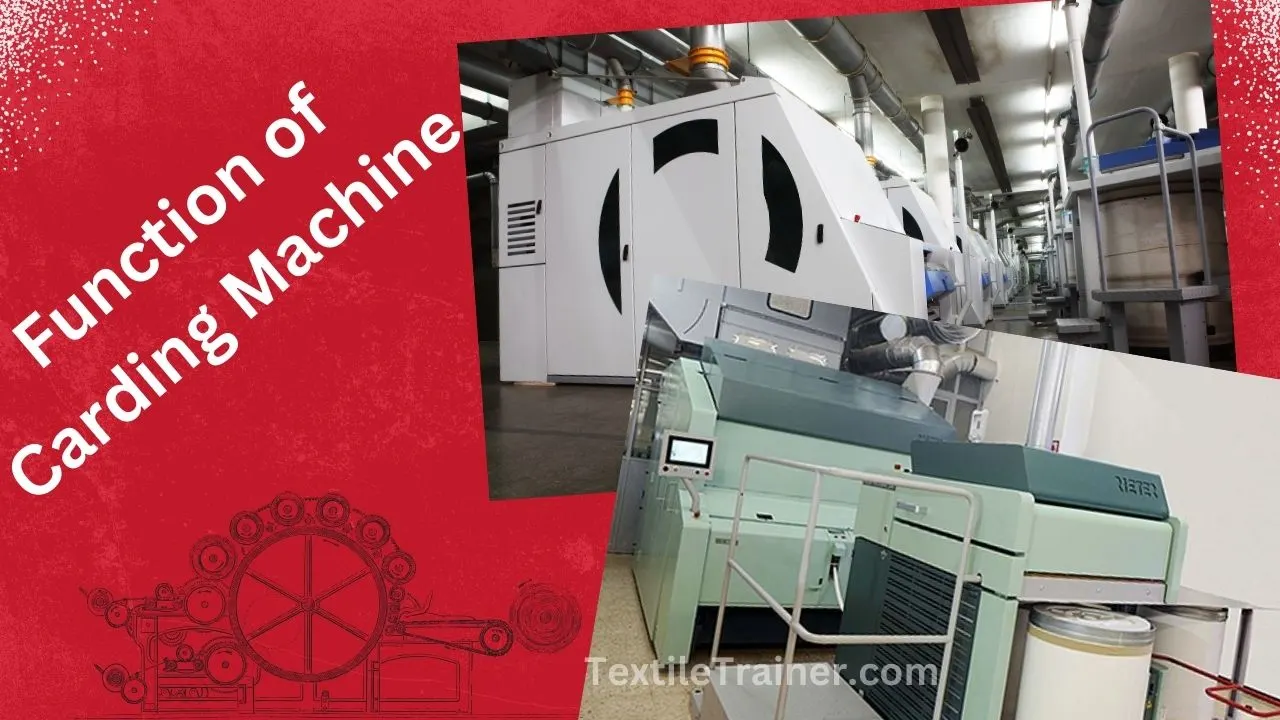10 Major Faults in Carding Machine with Effective Solution
Introduction:
In this article, I will describe 10 major faults in carding machine. After receiving cotton from blow rooms, carding is used to open the cotton thoroughly and separate its fibers by carding, then coil the carded cotton web and deliver it in cans for the next step. As part of the spinning process, carding plays an important role in determining the final properties of the yarn, especially the amount of neps and husks.
It helps us both way to open the tuft into a single fiber and to remove the impurities and neps. It has been said that the card is at the heart of every spinning mill. The card is fed in two ways. Manually and through a chute feed system. Manually, the lap is produced in the blow room and is fed to the card. In chute feed, the material is fed to the card machine through an air flow system. Low feed variation will lead to better carding quality. Approximately 90% cleaning efficiency can be achieved with the help of a carding machine. During the carding process, different kinds of problems occur. Among them, the neps fault is prominent.

Faults in Carding Machine:
- Lower NRE%
- Sliver variation.
- Cloudy web.
- Hole in web.
- Sagging web.
- Disappearing web
- Loss in yarn strength.
- Malformed selvedges.
- More cylinder loading.
- Excessive blowout.
Now, I will describe all the fault with their main causes and remedy.
1. Lower NRE%:
If neps are not removed as standard level. Therefore, card sliver contain higher nep density i.e. Neps/g.
Causes:
- Incorrect speed setting of different carding surfaces.
- Improper geometry of card cloth.
- Improper distance setting between different card surfaces.
- Incorrect point density of carding saw tooth wire.
- Damaged or wear downed carding wire.
Remedy:
- Monitor and adjust speeds regularly.
- Replace card cloth with correct geometry after evaluation.
- Distances should be adjusted according to manufacturer guidelines.
- The carding saw tooth wire should be examined and replaced with the correct density of points.
- Check carding wire regularly for damage or wear.
2. sliver variation:
Causes:
- Inconsistent and uneven lap feeding.
- A wider setting of the taker in the cylinder and the feed plate in the feed roller.
- There is excessive tension between the calendar roller and the coiler head.
- The calendar roller, doffer, or feed plate has been damaged.
Remedy:
- There should be regularity and evenness in lap feeding.
- The feed plate should be adjusted perfectly to feed the roller and taker into the cylinder.
- Between the calendar roller and coiler head, the required tension should be applied.
- Use a calendar roller or feed plate or doffer that is fault-free.
3. cloudy web:
Causes:
- There is a wide setting between flats and cylinders.
- The wire has been overloaded.
- Wires on flats, doffer, taker in, and cylinder are defective.
- feed plate set too far from taker-in
Remedy:
- A precise setting should be applied between the cylinder and flats.
- Grinding the card’s organs.
- The doffer, cylinder, taker in, and flats should all be wired with fault-free wire.
4. Hole in web:
The main cause of holes in a web is damaged, especially pressed wire points on the doffer. Foreign matter, such as metal pieces, coir, leather or wet and entangled cotton lumps, can also cause this.
Causes:
- Wire points with different heights.
- A faulty wire on the doffer or card.
Remedy:
- All wires should have the same height.
- Card or doffer wire should be fault-free.
5. sagging web:
Insufficient tension draft, high humidity, worn out key in calendar roller gears, heavy material fed to card and inadequate pressure on the calendar roller may cause this. Increase tension draft between doffer and calendar roller. Reduce speed of doffer and maintain RH between 50 and 60 percent if excessive sagging occurs.
Causes:
- The amount of humidity is lower.
- Doffer speed is excessive.
- There is a lower tension draft between the cylinder and the doffer.
Remedy:
- It is recommended to keep the humidity at 50-60%.
- Use the required amount of doffer speed.
- Doffer and cylinder tension draft should be optimum.
6. disappearing web:
Causes:
- The under casing nose is too long for the type of material being carded.
- Doffers that are dull or damaged.
Remedy:
- The under casing nose should be appropriate.
- Repair damage of doffer.
7. loss in yarn strength:
Causes:
- Too much pressure on the crush roller.
- Taker-in speed is excessive.
- The taker-in wire is the wrong type.
- There is not enough flat strip.
Remedy:
- Crush roller pressure should be reduced to the recommended level.
- The taker-in speed should be adjusted according to the manufacturer’s recommendations.
- Taker-in wires should be replaced with the appropriate type for the carding process.
- Make sure there is enough flat strip for the carding process.
8. malformed selvedges:
Causes:
- The card feed is too wide.
- The accumulation of fiber between the undercasing and the card framing.
- Oil and grease leakage from bearings.
- Rough and broken undercasing.
- Undercasing is the wrong length.
Remedy:
- Make sure the card feed width is set to the desired value.
- Inspect and clean the area between the undercasing and card framing regularly to remove accumulated fiber.
- Replace damaged bearings if they show signs of leakage.
- If the undercasing is rough or broken, repair or replace it.
- Undercasing should be replaced with the correct length that matches the specifications of the machine.
9. more cylinder loading:
Causes:
- The doffer is set too far away from the cylinder.
- Wires on the cylinder are dirty.
- Wire damage on the cylinder.
- The flat settings are too close together.
- The selvedge is fed with double thickness.
Remedy:
- As per manufacturer guidelines, adjust the distance between the doffer and the cylinder.
- Keep the wires on the cylinder clean by regularly cleaning them.
- Check the cylinder wires for damage and replace any that are damaged.
- In order to achieve the desired carding quality, adjust the flat settings to the recommended distance.
- Feed the selvedge with a single layer of material.
10. Excessive blowout:
Causes:
- Undercasing is not set correctly.
- The casing has broken bars.
- An incorrectly set cylinder bends.
Remedy:
- The undercasing should be adjusted according to the manufacturer’s instructions.
- Check the casing for broken bars and replace them if necessary.
- To avoid bends, realign and set the cylinder correctly.
These are the Faults in Carding Machine. If you have any question about Faults in Carding Machine, let me know below comment box.
You May Read:
- Objectives and basic function of carding machine.
- Working principle of carding machine.
- Why carding is called heart of spinning?
- Operating zone of carding machine.
- Neps in carding machine.
- Function of carding machine.
- Types of card clothing with advantage and disadvantage.
- Flexible card clothing vs metallic card clothing.
- Action of carding machine.
- Stripping in carding.
- 10 Latest Development of Modern Carding Machine



